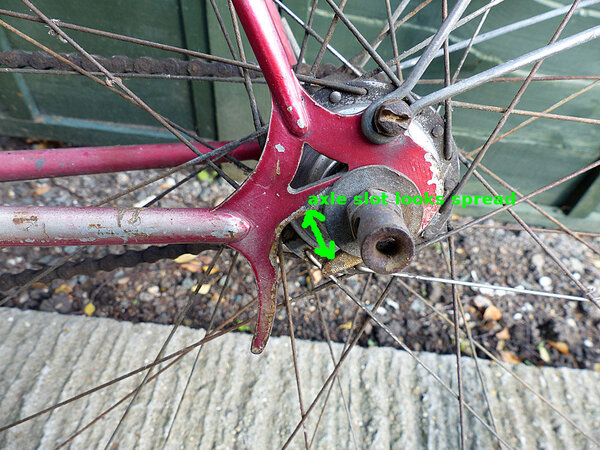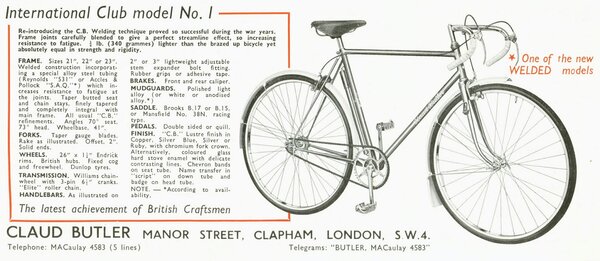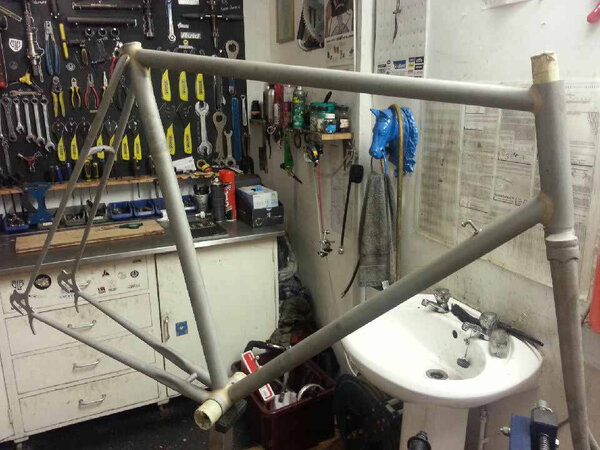creindesign
Dirt Disciple
Hi Colin, great find! Interesting frame and nice twin crown fork.
Maybe I have missed it, but do you have a frame number?
Should be under BB, and/or check the fork tube.
Might help to pinpoint a year of fabrication - and consequently narrow down the model options.
BTW, your left rear dropout looks out of shape - you can probably coldset it to its original shape.
An old post from ctc forum http://forum.ctc.org.uk/viewtopic.php?f=5&t=12093
same continental dropouts on the rear - looks to be the same finish - top seatstays are different and it has a different seatcluster.
Didn't CB usually use a seat clip on their brazed models?
If you look closely to the seat cluster, could it have been repaired / changed? The brazing looks a bit rough round the seat post on the pictures...
All the best, Rogier
Maybe I have missed it, but do you have a frame number?
Should be under BB, and/or check the fork tube.
Might help to pinpoint a year of fabrication - and consequently narrow down the model options.
BTW, your left rear dropout looks out of shape - you can probably coldset it to its original shape.
An old post from ctc forum http://forum.ctc.org.uk/viewtopic.php?f=5&t=12093
same continental dropouts on the rear - looks to be the same finish - top seatstays are different and it has a different seatcluster.
Didn't CB usually use a seat clip on their brazed models?
If you look closely to the seat cluster, could it have been repaired / changed? The brazing looks a bit rough round the seat post on the pictures...
All the best, Rogier


